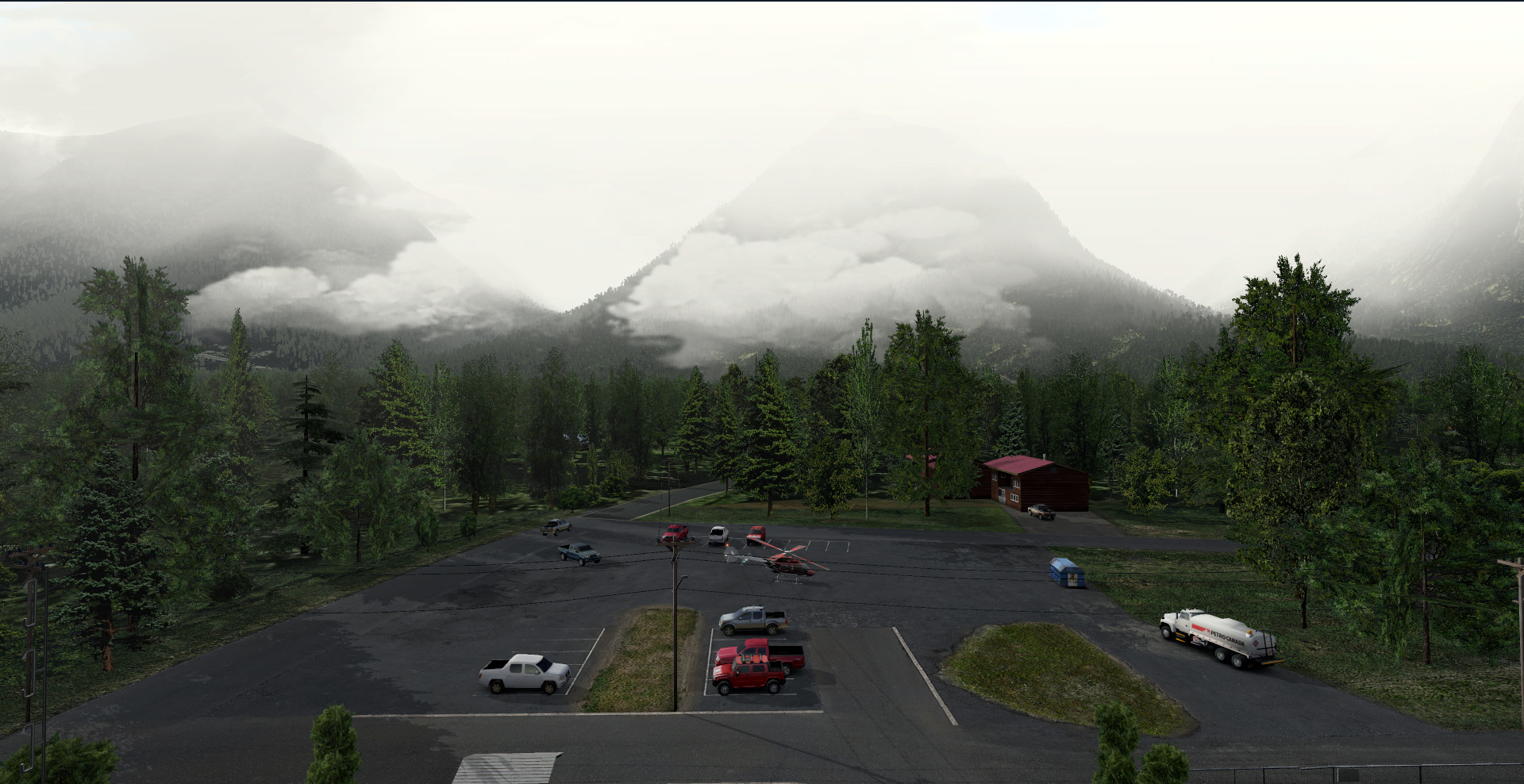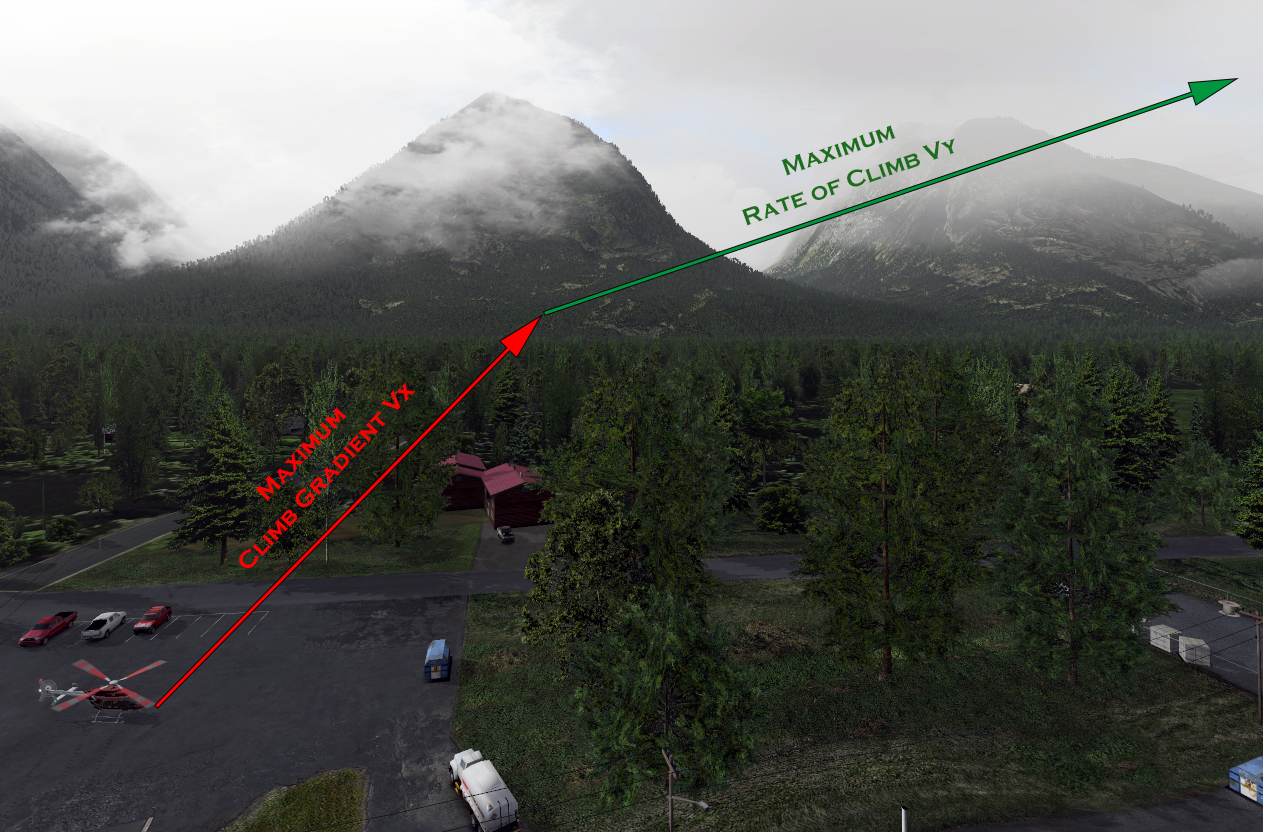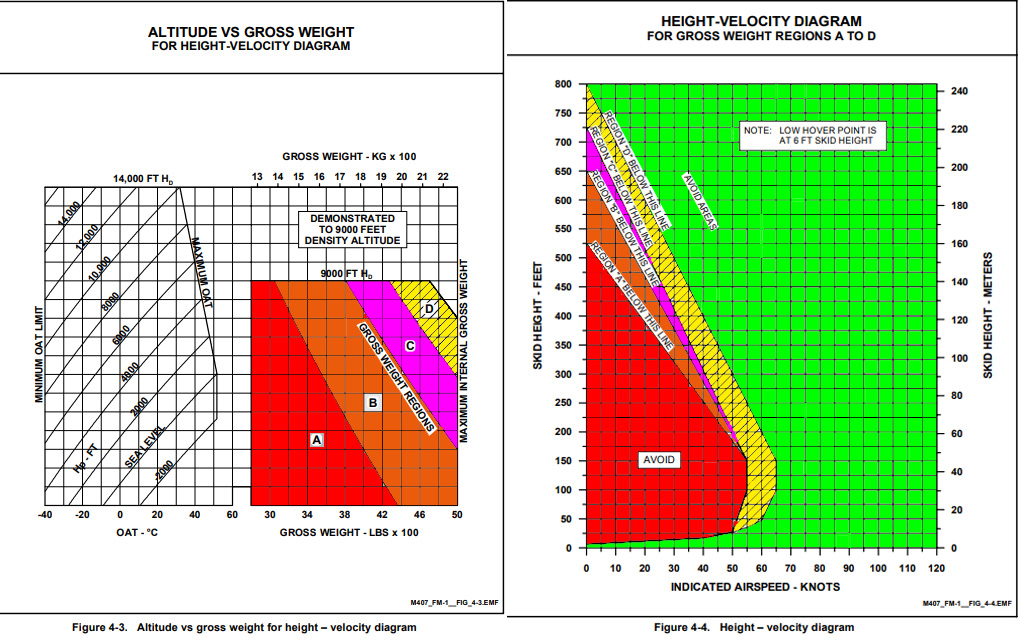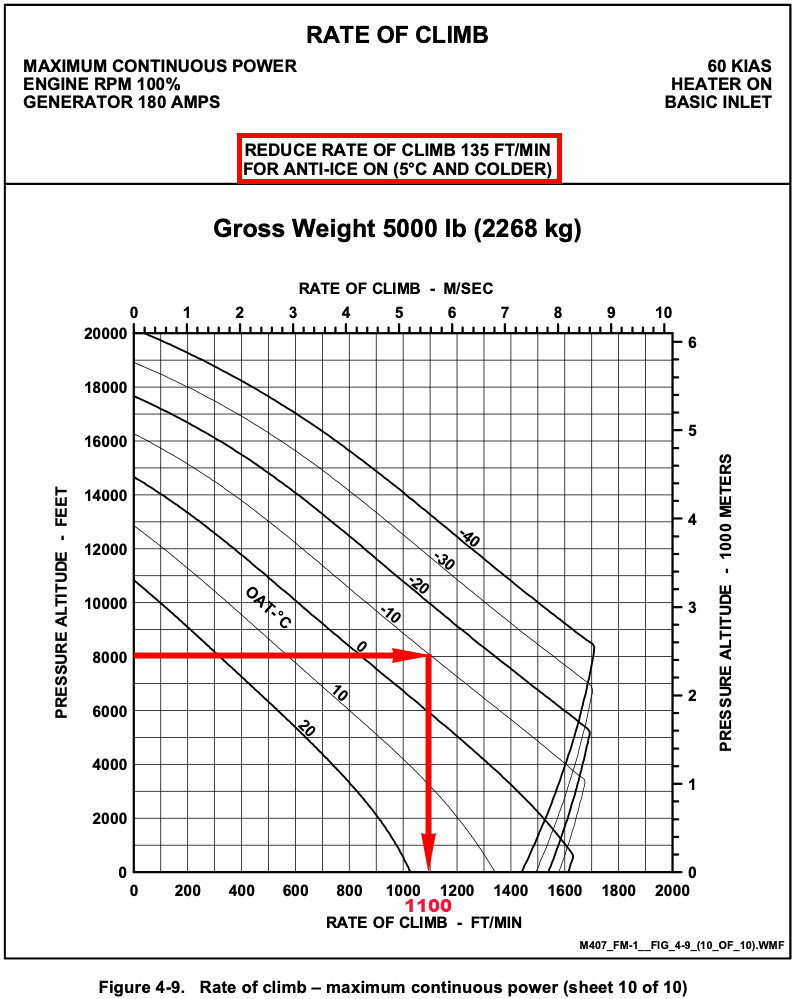¶ Introduction
When the take-off field is confined by geographical or man made features, climb performance calculations are vital for helicopters.

¶ Best Rate of Climb (Vy) and Best Angle of Climb (Vx)
After take-off, until clearing obstacles, pilots need a speed which gives them most altitude gain in shortest distance. This speed is called 'best angle of climb speed' or shortly Vx. Since helicopters have vertical take-off and climb capabilities, this speed can be as low as 0 knots depending on helicopter performance.
Vertical take-off with 0 speed requires more power than take-off with forward velocity. In addition to power, high altitude and low speed is unsafe if an engine failure occurs. This kind of take-offs are not recommended unless necessary.
The speed for best climb performance is called 'best rate of climb speed' or shortly Vy. This speed gives maximum altitude gain in shortest time and is very useful when pilots want to reach the desired altitude in shortest time for maximum efficiency.

While making a confined area take-off, Vy speed should be established after obstacles are cleared.
¶ High-Velocity Diagram
This diagram demonstrates safe altitude and airspeed combination for the B407 helicopter.
High altitude and low airspeed combination is dangerous for helicopters.

Engine failure outside safe area might end up with a hard landing.
¶ Sample Climb Problem
¶ Conditions and Objectives
Helicopter: Bell 407
- Take off Power: 100 %
- Pressure Altitude: 8000 feet
- Gross Weight: 5000 lb
- OAT: -10 C
- Wind calm
- Heater and anti-ice on
- Take-off Power
- Speed: 60 kts
Objective: Find the maximum rate of climb.
¶ Rate of Climb
Go to the table: Rate of climb -- maximum continuous power .

1 Enter the appropriate gross weight chart for 5000lb and heater on.
2 At HP scale of 8000 feet proceed horizontally to temperature of -10°C.
3 Drop down vertically and read a rate of climb of 1100 feet per minute.
4 Reduce 135ft/min for Anti-Ice on: 1100-135 = 965ft/min.
- None
- VID 522050 - Creation
- VID 496402 - Wiki.js integration